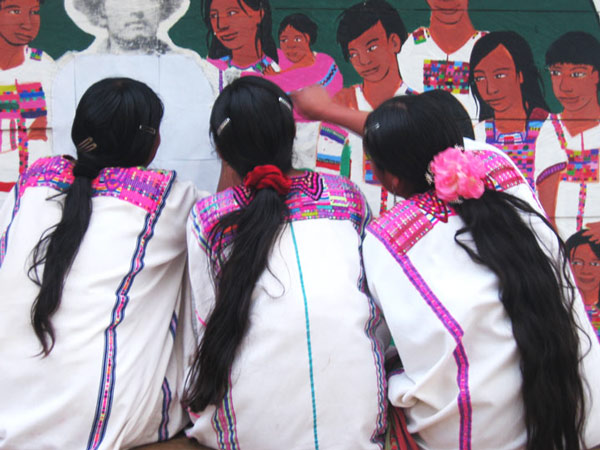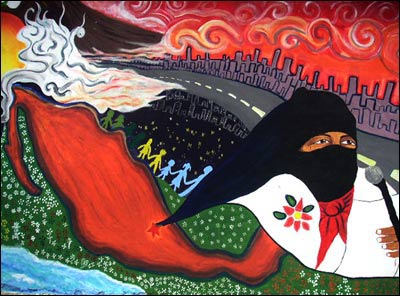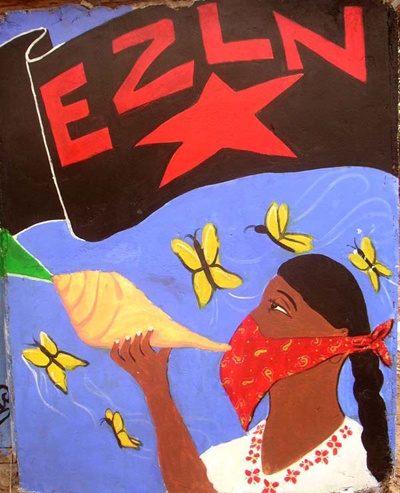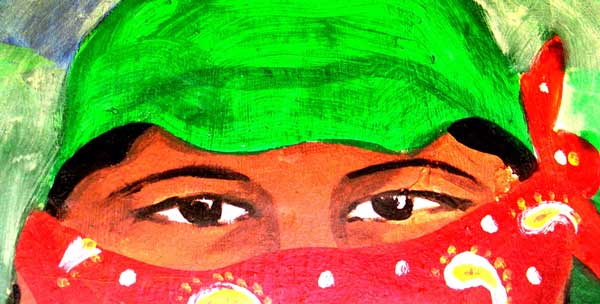Zapatista Women in Living Color
In Chiapas Women Use Street Art to Celebrate Their History

The Zapatista Army of National Liberation, in Spanish, the Ejército Zapatista de Liberación Nacional (EZLN), was founded in 1983. Indigenous peoples and their allies declared a non-violent war against the Mexican state. They continue to fight for land rights and against policies threatening farming as means of livelihood. As you can see from these images, one of their weapons is the paintbrush.
In Chiapas, Mexico, faded barn doors, gray school walls and community buildings have been transformed into vibrant works of art and political expression by the Zapatista community.
In places where high levels of marginalization and illiteracy exist, such as in Chiapas, images play an important role in educating and raising consciousness and self-awareness. Historical and contemporary events are "told" using pictures, often more effectively because of their permanency on the public surface.
Among the cast of characters on the walls are Zapatista women. The murals illustrate their position as pillars of the community -- as leaders, teachers, soldiers, mothers, and farmers. Many of their faces are masked, a symbol of their commitment to the Zapatista cause; the Zapatistas hide their faces in order to be seen.
A speech balloon swirls out from one woman's masked mouth, shouting "Autonomy!" Under a banner reading "EZLN," or "Zapatista Army of National Liberation," a masked girl blows a conch shell horn, summoning her community to gather by way of the ancient Mayan tradition.
"It is through murals that we manifest our way of being, our culture, and our resistance as indigenous people, that for many years has been attempted to be erased from the map of our Mexican territory," a community member said.
No single artist paints these scenes. The murals are a collective expression of a community's voice. The honored heroes, the slogans, and the symbolism chosen for the walls all provide inspiration and validation to continue the struggle towards their autonomy. The images chosen for these public pieces celebrate cultural and historical figures, the power of the people against the odds, and utopian views of a collective future.
On one barn in the Zapatista village of Oventic, the masked face of a Mayan woman shares the wall with a portrait of Mexico's 1910 revolutionary leader Emiliano Zapata, after which Zapatista movement was named. Beside the woman's face, a graffiti proclaims: "La mujer valiente es el corazon de la libertad." (At the heart of liberty is a valiant woman.")
Adapted from an article by Laila La Quebaila.





